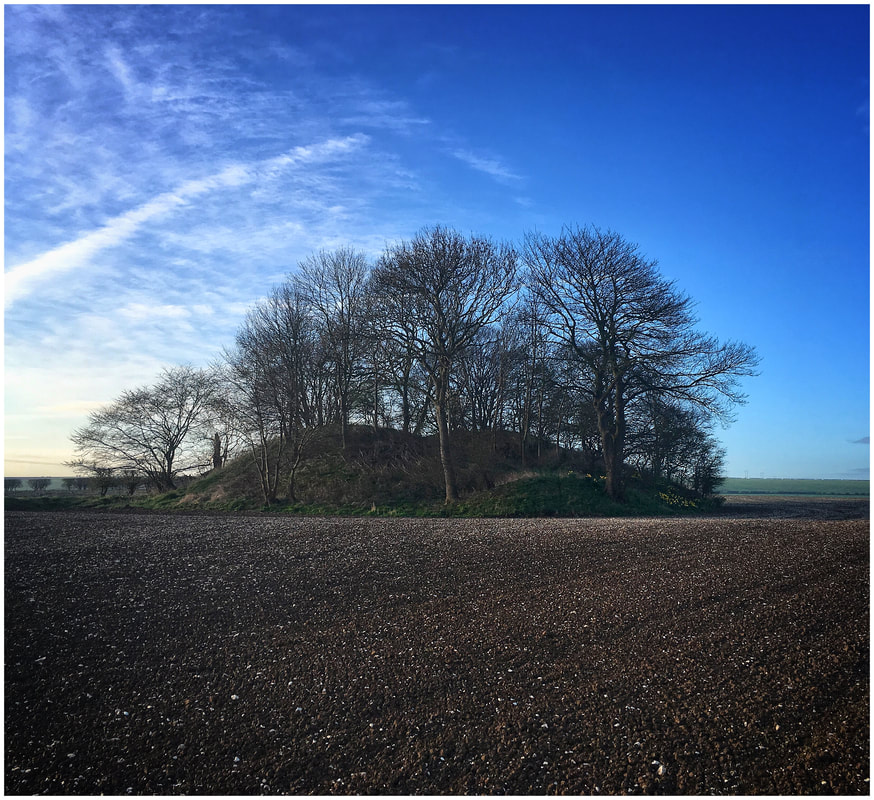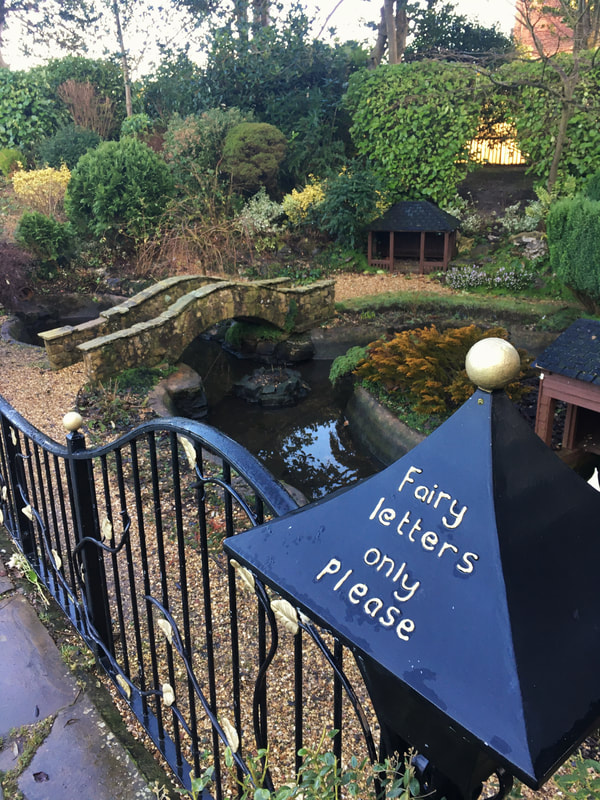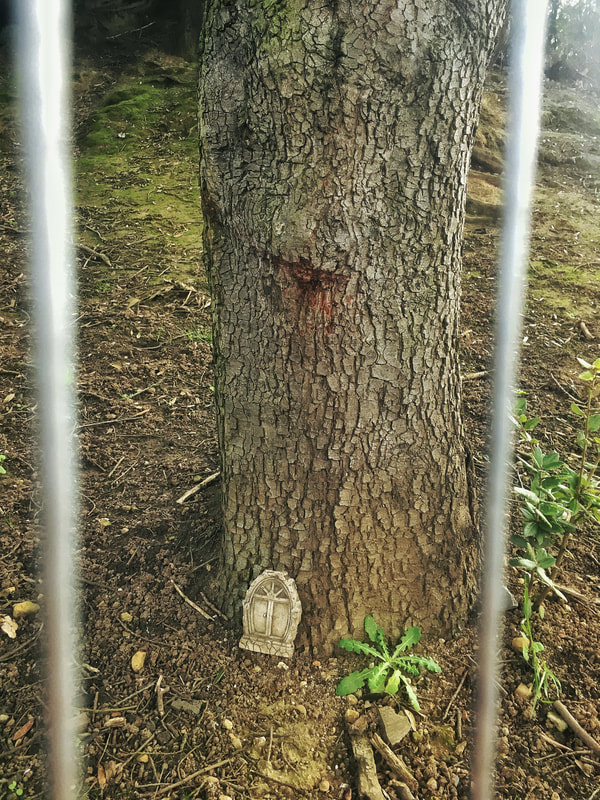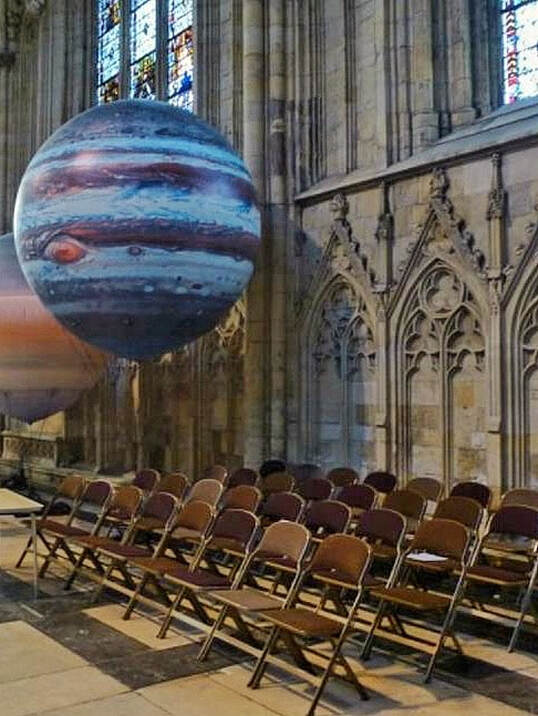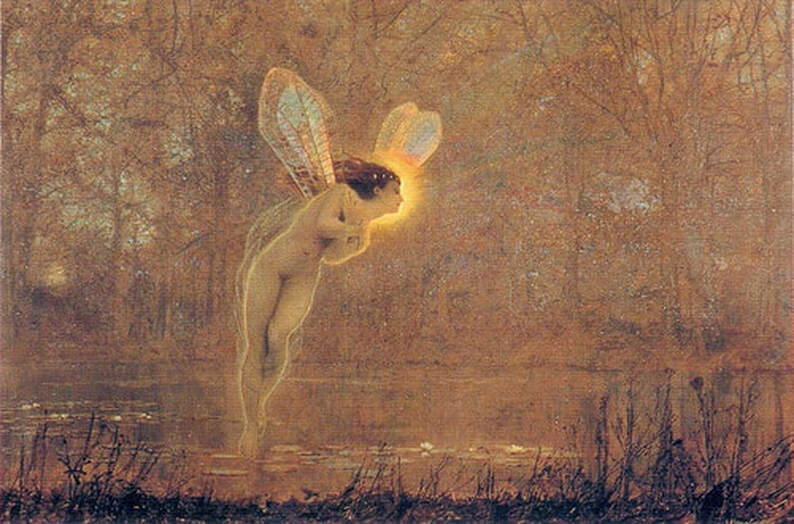His Dark Materials
At a talk on local geology, the speaker briefly mentioned the Bridestones, the strange rock formations found in Dalby Forest. He said they were formed by water erosion and glaciation, with the horizontal cuts perhaps being made by Arctic tundra-type winds cutting across the stacks during the ice age. The curious rock formations, he quipped, weren’t made by fairies. There was some resounding laughter from the audience, but I wondered: why is that so funny?
Curious natural objects in the landscape attract stories of the supernatural, of fairies, spirits and giants, for example. Such stories are important, if nothing more than as a record of our imagination and inventiveness. Socrates said the ancients were an uncomplicated lot and that if a certain rock was known for telling the truth, they would listen to it.
The BBC recently adapted Philip Pullman’s trilogy about alternative realities. The title, His Dark Materials, was taken from Milton’s poem Paradise Lost: “Unless the Almighty Maker them ordain / His dark materials to create more worlds”. The very idea of the possible existence of other worlds has always been met with disdain and disapproval, consigned, on the whole, to the fictional realm. The Scottish minister Rev Robert Kirk of Aberfoyle claimed to have been kidnapped and taken to another world by fairies and wrote about it in his 1691 book The Secret Commonwealth. He described fairies as fact and investigated them without fear of reprisal from his church peers on how another world could exist alongside our own. He wrote: “These siths or fairies are said to be of middle nature betwixt man and angel, as were daemons of old but with light, changeable bodies”. The quote greatly influenced Pullman.
Aged 50 and in good health, Kirk suddenly collapsed and died while walking at his favourite spot on ‘fairy hill’. After his death, relatives reported that he appeared at christenings and family feasts, saying he wasn’t dead but held captive in another world. For over 200 years, some people believed that Kirk was in fairyland. His coffin is still reputed to contain nothing but stones.
A similar tale brings us closer to home. It refers to Willy Howe, a tumulus near Wold Newton. It is a scheduled monument, protected and preserved for the nation for its historical interest. The tale is told by William of Newburgh, a Bridlington monk who wrote a historically valuable description of Scarborough castle. A villager claimed that while riding home one night, he heard laughter and singing coming from Willy Howe. He found an open door in the mound and saw people inside feasting. He was offered a drink but refused and stole the cup, which was made of strange materials. It was eventually presented to George V, who allegedly used it as a shaving bowl. It is now in the British Museum.
Tales of fairies at Willy Howe continue. They include fairies leaving gold pennies out every night for a farmer. The gifts came to an abrupt end when he started bragging about his good fortune. Another tale tells of the discovery of a fairy horde so big that it took a train of horses a quarter mile long to drag it out, only for the horde to be lost at the last minute by the utterance of a blasphemy: “Whether’s by God’s will or not, by God we’ll have this ark!”
The British landscape artist John Atkinson Grimshaw, or Grimmy to his friend and fellow painter James Whistler, made a series of fairy paintings when he lived at Castle by the Sea on Mulgrave Place, Scarborough. He left few notes or diary records explaining his intentions behind the peculiar paintings. But the landscapes in the series were inspired by the land around the north and south bays. Some of the paintings are on display at galleries around the country.
Many fairy gardens seem to just pop up in Scarborough. The public Shuttleworth garden on the Esplanade has a miniature rock and water garden constructed in 1937. Visitors are invited to send letters to the fairies. The popular Tree Walk, opened in 1953 in Peasholm Park, was full to the brim with fairies and illuminated whimsy. A basic fairy garden is in its initial stages at the open-air theatre; tiny doors are appearing in the trees just across from the crested newts.
The Italian astronomer Galileo was persecuted for his notes of other worlds. Condemned by the Roman Inquisition in 1633, Galileo published his observations of the moons of Jupiter and the phases of Venus. They supported heliocentric theory, which placed the Sun not the Earth at the centre of the solar system. This was considered heresy and resulted in Galileo being sentenced to indefinite imprisonment and kept under house arrest until his death. In 1992, Pope John Paul II declared Galileo’s observations to be correct and that his suffering was the tragic consequence of incomprehension. Galileo received a posthumous apology in 2000. A Lego figure of him is now in orbit around Jupiter aboard the space satellite Juno.
“Imagination is more important than knowledge, for knowledge is limited, whereas imagination embraces the entire world, stimulating progress” - Albert Einstein.
DavWhiteArt.com
At a talk on local geology, the speaker briefly mentioned the Bridestones, the strange rock formations found in Dalby Forest. He said they were formed by water erosion and glaciation, with the horizontal cuts perhaps being made by Arctic tundra-type winds cutting across the stacks during the ice age. The curious rock formations, he quipped, weren’t made by fairies. There was some resounding laughter from the audience, but I wondered: why is that so funny?
Curious natural objects in the landscape attract stories of the supernatural, of fairies, spirits and giants, for example. Such stories are important, if nothing more than as a record of our imagination and inventiveness. Socrates said the ancients were an uncomplicated lot and that if a certain rock was known for telling the truth, they would listen to it.
The BBC recently adapted Philip Pullman’s trilogy about alternative realities. The title, His Dark Materials, was taken from Milton’s poem Paradise Lost: “Unless the Almighty Maker them ordain / His dark materials to create more worlds”. The very idea of the possible existence of other worlds has always been met with disdain and disapproval, consigned, on the whole, to the fictional realm. The Scottish minister Rev Robert Kirk of Aberfoyle claimed to have been kidnapped and taken to another world by fairies and wrote about it in his 1691 book The Secret Commonwealth. He described fairies as fact and investigated them without fear of reprisal from his church peers on how another world could exist alongside our own. He wrote: “These siths or fairies are said to be of middle nature betwixt man and angel, as were daemons of old but with light, changeable bodies”. The quote greatly influenced Pullman.
Aged 50 and in good health, Kirk suddenly collapsed and died while walking at his favourite spot on ‘fairy hill’. After his death, relatives reported that he appeared at christenings and family feasts, saying he wasn’t dead but held captive in another world. For over 200 years, some people believed that Kirk was in fairyland. His coffin is still reputed to contain nothing but stones.
A similar tale brings us closer to home. It refers to Willy Howe, a tumulus near Wold Newton. It is a scheduled monument, protected and preserved for the nation for its historical interest. The tale is told by William of Newburgh, a Bridlington monk who wrote a historically valuable description of Scarborough castle. A villager claimed that while riding home one night, he heard laughter and singing coming from Willy Howe. He found an open door in the mound and saw people inside feasting. He was offered a drink but refused and stole the cup, which was made of strange materials. It was eventually presented to George V, who allegedly used it as a shaving bowl. It is now in the British Museum.
Tales of fairies at Willy Howe continue. They include fairies leaving gold pennies out every night for a farmer. The gifts came to an abrupt end when he started bragging about his good fortune. Another tale tells of the discovery of a fairy horde so big that it took a train of horses a quarter mile long to drag it out, only for the horde to be lost at the last minute by the utterance of a blasphemy: “Whether’s by God’s will or not, by God we’ll have this ark!”
The British landscape artist John Atkinson Grimshaw, or Grimmy to his friend and fellow painter James Whistler, made a series of fairy paintings when he lived at Castle by the Sea on Mulgrave Place, Scarborough. He left few notes or diary records explaining his intentions behind the peculiar paintings. But the landscapes in the series were inspired by the land around the north and south bays. Some of the paintings are on display at galleries around the country.
Many fairy gardens seem to just pop up in Scarborough. The public Shuttleworth garden on the Esplanade has a miniature rock and water garden constructed in 1937. Visitors are invited to send letters to the fairies. The popular Tree Walk, opened in 1953 in Peasholm Park, was full to the brim with fairies and illuminated whimsy. A basic fairy garden is in its initial stages at the open-air theatre; tiny doors are appearing in the trees just across from the crested newts.
The Italian astronomer Galileo was persecuted for his notes of other worlds. Condemned by the Roman Inquisition in 1633, Galileo published his observations of the moons of Jupiter and the phases of Venus. They supported heliocentric theory, which placed the Sun not the Earth at the centre of the solar system. This was considered heresy and resulted in Galileo being sentenced to indefinite imprisonment and kept under house arrest until his death. In 1992, Pope John Paul II declared Galileo’s observations to be correct and that his suffering was the tragic consequence of incomprehension. Galileo received a posthumous apology in 2000. A Lego figure of him is now in orbit around Jupiter aboard the space satellite Juno.
“Imagination is more important than knowledge, for knowledge is limited, whereas imagination embraces the entire world, stimulating progress” - Albert Einstein.
DavWhiteArt.com

